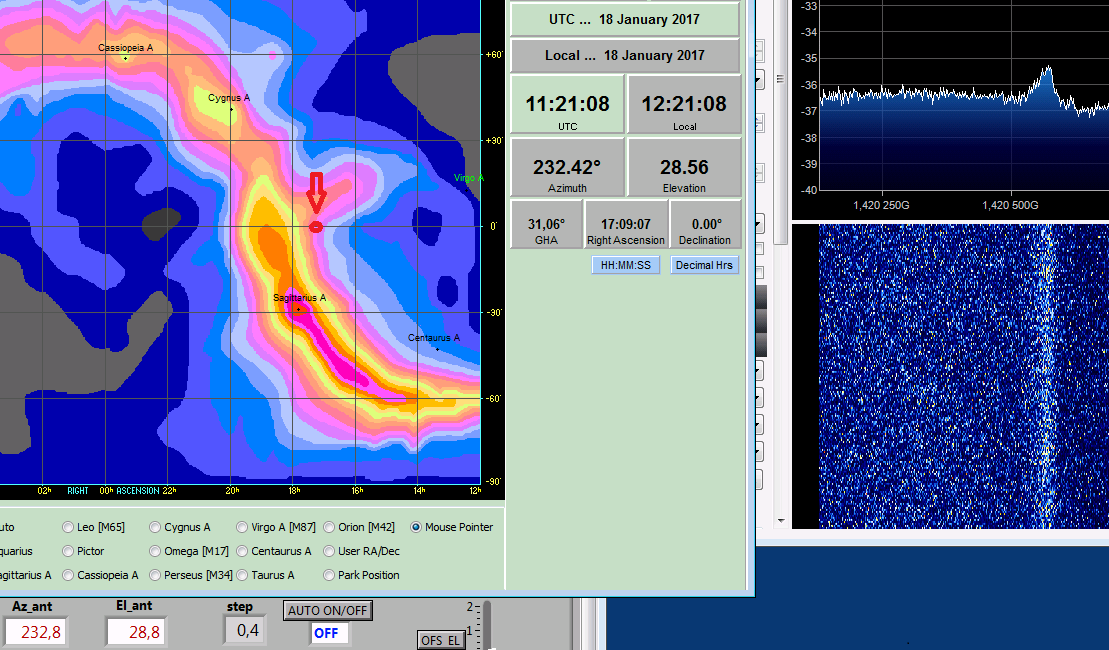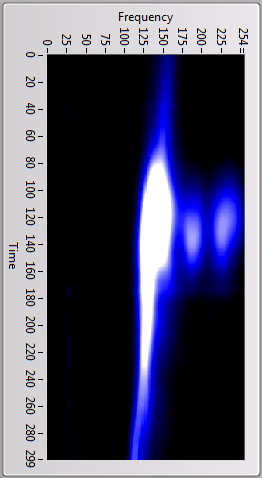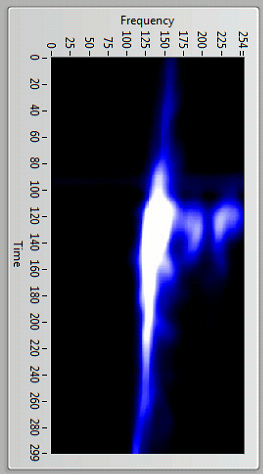
This is an example how strong I see the hydrogen line when aiming to DEC=0deg and RA=17h30m.
Equipment was a 3m dish, 2 stage preamplifier with 35 dB gain, RTL-SDR. For display the software SDRsharp was used.
Hydrogen Line Measurement
The Hydrogen line on 1420 MHz can be already detected and measured with smaller antennas, dish diameter of 1,5m and up As we have no point sources but the hydrogen clouds normally cover a larger area, a small beamwidth is good for a better resolution but not essential.
My sytems (3m dish and 7,3m dish) are optimized for 1296 MHz, that means I have some loss on 1420 MHz. Sun noise is 3dB less than on 1296 MHz. Nevertheless, as soon as the antenna is pointing towards the milky way, I immediately can see the hydrogen line on the waterfall of programs like SDRsharp or HDSDR.
 |
This is an example how strong I see the hydrogen line when aiming to DEC=0deg and RA=17h30m. Equipment was a 3m dish, 2 stage preamplifier with 35 dB gain, RTL-SDR. For display the software SDRsharp was used. |
Drift scans (vertical: 300 minutes=5 hours) of the milky way around Cygnus A. Horizontal scale is 1420,4 +/- 0,5 MHz.
Software by Andrea dell'Immagine, IW5BHY
The 'fat' cloud comes from the Perseus arm of the Milky Way, our home galaxy.
The smaller clouds from other arms (Outer Arm), shifted to higher frequencies, that means approaching!
 |
 |
| 3m dish recording, lower resolution | 7,3m dish recording, higher resolution, more details |
Mapping the whole sky would be very interesting but also time consuming to analyze. Therefore a project for the future....